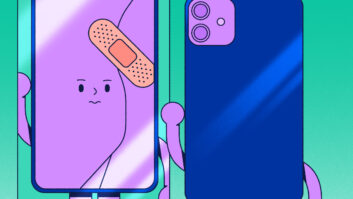Numerous research reports have been done on the multibillion-dollar plague of consumer remorse returns, hitting the electronics industry’s feather thin margins hard. A recent research report by Accenture titled “Reducing the Quantity and Cost of Consumer Returns” estimated the returns tsunami to cost consumer electronics manufacturers and retailers over $16 billion in 2011 alone. Tangible margin drains from return merchandise include costs to receive, test and assess, report, repair, accessorize, re-box, restock and resell discounted returned merchandise.
Accenture’s research report concluded that roughly two-thirds of the $16 billion spent on returns was due to product ultimately classified as non-defective, and buyer’s remorse took the no-defect-found returns to nearly 95 percent. On average, 5 percent of returns in the period measured were true defectives. Setting aside scammers and habitual returners as the exception, nine out of 10 products returned are a result of bad consumer experience and/or a product that failed to live up to expectations.
As an industry, we missed three critical intersection points that could have made an impact in the all-too-common narrative of the customer above. Focusing on these three critical intersection points including point-of-sale, point-of-use and point-of-crisis, retailers and manufacturers can come together to create a better user experience. Increasing customer satisfaction significantly impacts returns percentages and related returns expenses.
Point-Of-Sale
Harken back to the commissioned sales days of the CE industry. Sales people were given some rudimentary sales training, and were expected to have at least a basic proficiency with the technology they sold. Customers were “qualified” by sales people trained to identify what the customer was looking for. Many times, it was that same salesperson who would later help the consumer walk through any difficulty they encountered with the technology they purchased. The salesperson also had a financial incentive to keep the customer happy and keep the product sold. Returns were less frequent.
Today’s electronics, connectivity and product options are more sophisticated and far more advanced than the RCA console televisions of the last generation. And while the customer may expect more from their devices, the customer isn’t necessarily as sophisticated as the electronic advancements. What seems like an easy plug-and-play installation to those of us in the industry may be completely foreign to a consumer whose last television lasted him 16 years. In many cases, both online and in big-box retail stores, the consumer may never speak with anyone knowledgeable about the item they purchase. CE retailers report that return percentages are higher today than they were 10 years ago.
Returns percentages start with in store point-of-sale clarity. Absent the commission incentivized sales contact, does the customer understand what he is buying? Do the in-store demonstrations, on-box sales copy, and in-store collateral or online material help him make his buying decision? Are the personnel stocking the shelves more knowledgeable than the average consumer about the technology the store sells? And, mostly, does the customer leave the store with some idea of how to do what they want to do? If he gets confused, who should he call from his nameless and faceless transaction? We need to make it easy for customers to get what they want, and even easier to get help when they get perplexed. We’ve traded lower selling costs for higher returns. Reducing returns starts at the point-of-sale.
Point-Of-Use
As a consumer, one of the companies I could cite with some of the best “out of the box” experiences is Bose. When you unbox a product from Bose, you can tell that the person who left the installation instructions for you is someone who not only speaks English, but actually set up the product themselves. Every cord has a color coded label. Every part has a place, and every connection has an illustration. Bose goes to great lengths to ensure that you start out your ownership of their product with an easy installation experience.
The out-of-box experience lies squarely on the shoulders of the manufacturer. If a manufacturer wants architect a significant decrease in returns, increase the consumer satisfaction with the out-of-box experience. Having personally been on the product design side of the manufacturing process, it takes nearly as much time and energy to do it wrong as it does to do it right. And, when all else fails, make sure you are there to talk to the consumer.
Point-Of-Crisis
The Point-of-Crisis is at the critical juncture where the customer is on the fence and leaning towards returning an item. They have decided that the investment of time returning their purchase might exceed the value of keeping the item. Research reports suggest the intervention during the Point-of-Crisis is one way to positively impact the consumers’ decision to keep or return an item.
As a consumer, we take the path of least resistance at the point-of-crisis. Make it hard for us to find the answer we are looking for? Return. Have a multi-page website that doesn’t really answer our questions within a click or two? Return. Route calls to a foreign call center? Return. Don’t take calls at all? Return.
There’s a direct correlation between how a manufacturer interacts with a customer during their point-of-crisis, and the overall returns percentages for that manufacturer. If you help a consumer solve problems when they have them, you have a better chance of the product staying sold. If you make it hard for the customer to find you, make it difficult or inconvenient for them to talk with you, and place barriers up that keep the consumer from being fully satisfied, the path of least resistance is to simply return the product to the retailer.
One of the world’s largest retailers refuses to let their personnel use the word “problem.” In the culture of their unique vocabulary, the word “problem” is always replaced with the word “opportunity.” The same is true regarding the unsustainable level of consumer electronics returns. It’s an opportunity for manufacturers and retailers to make significant changes that will have a dramatic impact on bottom line profit and operating expenses.
The good news is most of the reasons the merchandise is coming back is not related to manufacturing defects. Improvements at the point-of-sale, point-of-use, and point-of-crisis can have a significant impact on the margin drain of consumer returns. We need to make it easier for people to buy what they want. We need to make it easier for them to set it up for themselves, and we need to make it easier for them to get help when they need it. The retailers who engage these three critical intersections (point-of-sale, point-of-use, and point-of-crisis) will be better positioned with happier customers and lower expenses to press on. Those who fail to stem the tide will likely be washed away by the returns tsunami.
Dave Happe is a 25-year veteran of the consumer electronics retail industry. He is currently the “chief problem solver” for Zero Returns, a service company that specializes in point-of-crisis customer intervention on behalf of retailers and manufacturers. For questions or comments on the article, contact [email protected]













